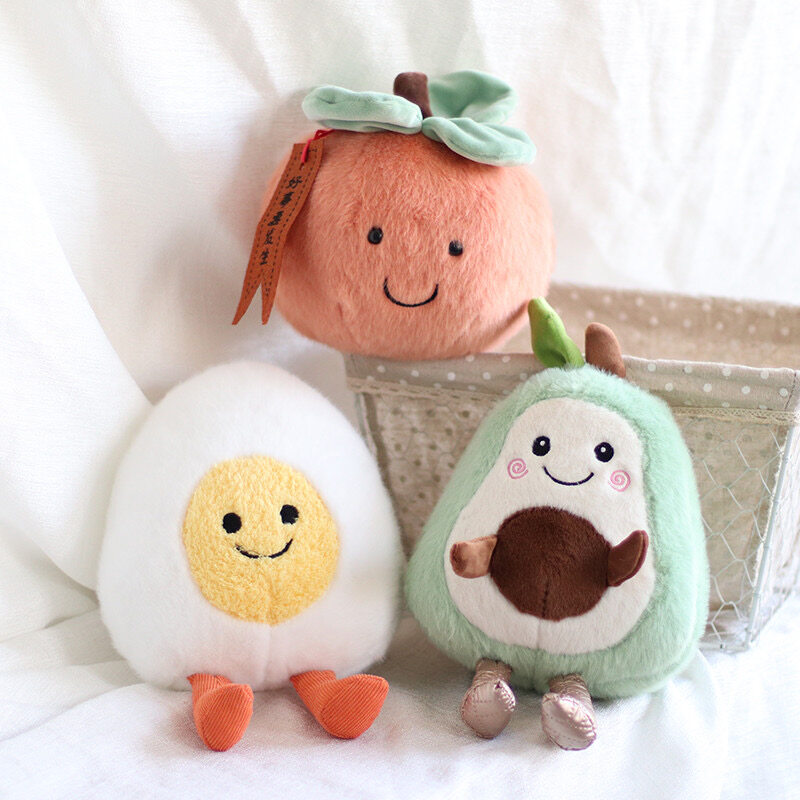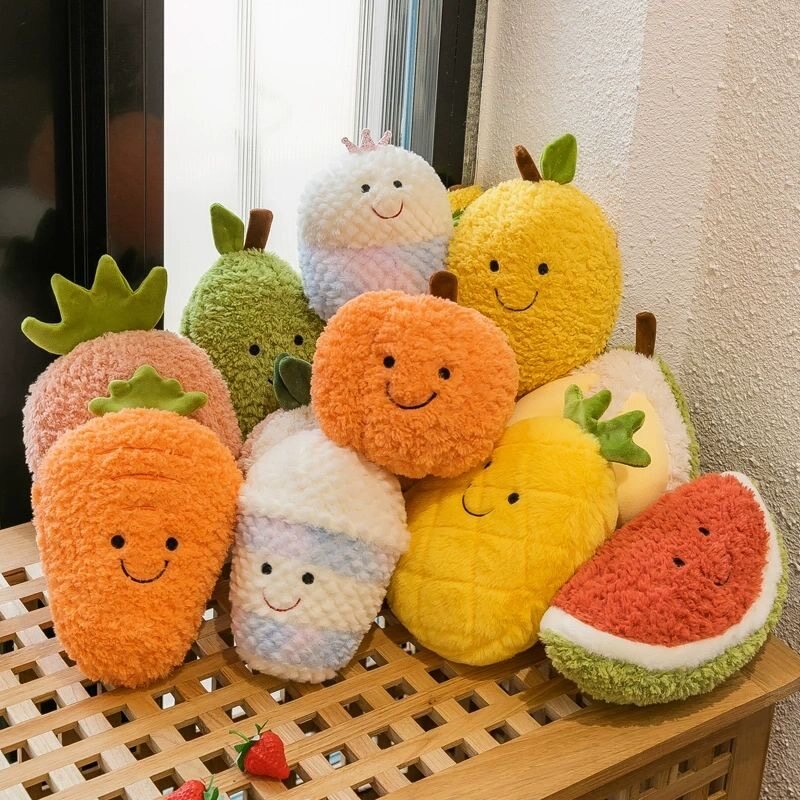Email format error
Email cannot be empty
Email already exists
6-20 characters(letters plus numbers only)
The password is inconsistent
Email format error
Email cannot be empty
Email does not exist
6-20 characters(letters plus numbers only)
The password is inconsistent


Teaching kids about healthy eating is crucial for their overall well-being and development. By instilling good eating habits at a young age, we can set them up for a lifetime of healthy choices. However, getting children excited about fruits and vegetables can be a challenge. That’s where plush fruit and vegetable toys come in. These fun and engaging toys provide a unique way to teach kids about healthy eating while also encouraging imaginative play and cognitive development.
Section 1: The Benefits of Plush Fruit and Vegetable Toys
1.1 Promoting Healthy Eating Habits:
The toys serve as visual representations of healthy foods. By introducing these toys to children, we can familiarize them with different fruits and vegetables, making them more likely to try them in real life. These toys can also be used to demonstrate portion sizes and encourage balanced meals.
1.2 Encouraging Imaginative Play:
The toys offer endless opportunities for imaginative play. Children can pretend to cook, serve, and eat these toys, allowing them to explore different roles and scenarios. This type of play helps develop their creativity, problem-solving skills, and social interactions.
1.3 Enhancing Cognitive Development:
Playing with the toys can enhance cognitive development in children. They can learn about colors, shapes, and textures as they interact with these toys. Additionally, they can practice counting, sorting, and categorizing the different fruits and vegetables, promoting early math skills.
1.4 Fostering Emotional Intelligence:
The toys can also help children develop emotional intelligence. They can use these toys to express their feelings and emotions, creating stories and scenarios that reflect their own experiences. This type of play encourages empathy, communication, and self-expression.
Section 2: Types of Plush Fruit and Vegetable Toys
2.1 Soft and Cuddly Plush Toys:
Soft and cuddly plush toys are perfect for younger children. These toys are made with soft materials and are safe for children to play with. They often come in a variety of sizes and shapes, allowing children to explore different textures and sensations.
2.2 Interactive Plush Toys:
Interactive plush toys are designed to engage children in play. They may have features such as sound effects, lights, or movement, making them more exciting and captivating. These toys can be used to teach children about cause and effect, as well as stimulate their senses.
2.3 Educational Plush Toys:
Educational plush toys are specifically designed to teach children about healthy eating. They may come with labels or tags that provide information about the nutritional benefits of each fruit or vegetable. These toys can also have removable parts, allowing children to practice cutting and preparing the food.
Section 3: How to Incorporate Plush Fruit and Vegetable Toys into Playtime
3.1 Creating a Play Kitchen:
One way to incorporate plush toys into playtime is by creating a play kitchen. Children can use these toys to pretend to cook and serve meals. They can also practice setting the table and serving healthy food to their plush toy friends.
3.2 Organizing a Grocery Store Pretend Play:
Another fun way to play with plush toys is by organizing a grocery store pretend play. Children can take turns being the shopkeeper and the customer, using the toys to buy and sell different fruits and vegetables. This activity helps children learn about money, negotiation, and decision-making.
3.3 Hosting a Picnic with Plush Food:
Hosting a picnic with plush toys is a great way to encourage outdoor play and healthy eating. Children can pack their plush toys in a picnic basket and set up a pretend picnic. They can practice sharing and taking turns while enjoying their imaginary meal.
3.4 Role-playing as a Chef or Farmer:
Children can also role-play as a chef or farmer using plush toys. They can create their own recipes, harvest their crops, and prepare meals for their plush toy customers. This activity promotes creativity, problem-solving, and a deeper understanding of where food comes from.
Section 4: Teaching Healthy Eating with Plush Fruit and Vegetable Toys
4.1 Introducing Different Fruits and Vegetables:
The toys can be used to introduce children to a wide variety of fruits and vegetables. Parents and educators can show the toys to children, name them, and talk about their colors, shapes, and tastes. This helps children become familiar with different healthy foods.
4.2 Teaching Colors and Shapes:
The toys are excellent tools for teaching colors and shapes. Children can sort and group the toys based on their colors or shapes, helping them develop their visual discrimination skills. They can also practice matching the toys to real fruits and vegetables.
4.3 Exploring Nutritional Benefits:
Educational plush toys can be used to explore the nutritional benefits of different foods. Parents and educators can read the labels or tags on the toys and discuss the vitamins, minerals, and other nutrients found in each fruit or vegetable. This helps children understand the importance of eating a balanced diet.
4.4 Encouraging Healthy Food Choices:
Plush toys can be used to encourage healthy food choices. Children can be encouraged to “feed” their plush toys with healthy foods and make similar choices for themselves. This activity helps children develop a positive attitude towards healthy eating and empowers them to make their own food choices.
Section 5: Additional Activities and Resources
5.1 DIY Plush Fruit and Vegetable Toys:
Parents and educators can engage children in a DIY project to create their own plush toys. This activity allows children to use their creativity and fine motor skills while learning about different fruits and vegetables.
5.2 Storytelling with Plush Toys:
The toys can be used as characters in storytelling activities. Children can create stories and adventures involving their plush toys, incorporating themes of healthy eating and nutrition.
5.3 Online Resources and Apps:
There are various online resources and apps available that provide interactive games and activities related to plush toys. These resources can further enhance children’s learning and engagement with healthy eating.
5.4 Incorporating Plush Toys into Arts and Crafts:
Plush toys can be incorporated into arts and crafts activities. Children can use them as inspiration for drawing, painting, or creating collages. This allows them to explore their artistic abilities while reinforcing their knowledge of healthy foods.
Conclusion:
Plush fruit and vegetable toys offer a fun and educational way to teach kids about healthy eating. By promoting healthy eating habits, encouraging imaginative play, enhancing cognitive development, and fostering emotional intelligence, these toys provide numerous benefits for children’s overall growth and development. With various types of plush toys available and a range of activities to incorporate them into playtime, parents and educators can effectively teach children about healthy eating in an engaging and enjoyable manner.